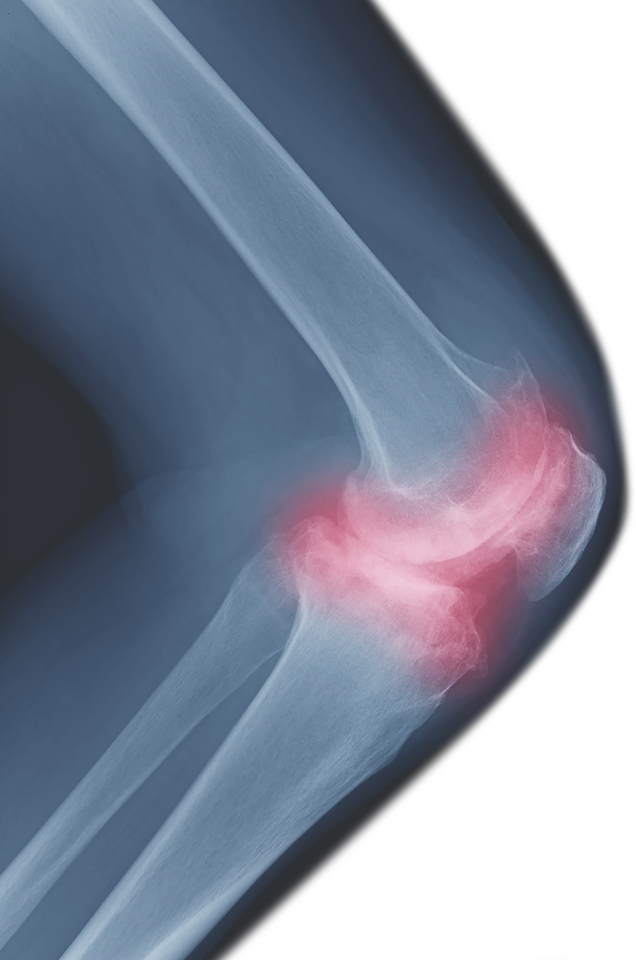Upcoming Webinars
Register NowThe Dark Side of Umbilical Stem Cells
Using Stem Cells Derived from Unrelated Donors
Stem cells regenerative medical field is truly a new era in medicine.
There are stem cells of different origin. I want to talk about stem cells derived from other sources than our own body. This treatment is called allogeneic stem cell transplant.
Celebrities are doing a wonderful job of spreading the word about stem cells but they believe it is safe to pour younger person’s blood or stem cells from pregnant female into their systems. Why? Because they been told so.
There is a lot of confusing partial information that makes it a challenging to know your risks when you are thinking about having a stem cell procedure. Autologous or allogeneic?
Using stem cells derived from unrelated donors (allogenic stem cells, not your own body) carries certain risks.
An allogeneic stem cell transplant is different from an autologous stem cell transplant, which uses stem cells from the patient's own body.
I believe umbilical and amniotic stem cells should stay in neonatal hematology and pediatrics where a low number of stem cells can be very efficient in treating genetic metabolic and hematologic diseases and work great for preterm infants. In adult patients, blood malignancies and diseases are the common reason for using umbilical cord stem cells.
People who want to use stem cell therapy for other reasons should stay away from any stem cells that are not produced in their own body.
Here is what the literature says:
Over the past decades, umbilical cord-blood (CB) and amniotic tissues became a well-recognized alternative source of stem cells for unrelated donor hematopoietic stem cell transplantation. As compared with other allogeneic stem cell sources from adult donors, it has the advantages of immediate availability of cells, an absence of risk to the donor and reduced risk of graft-versus-host disease despite donor-recipient HLA mismatch.
Unfortunately, Umbilical Cord Blood Transplant (UCBT) has several limitations, in particular, those associated with the prolonged period of neutropenia and the delayed immune reconstitution that has been related with a high transplantation-related mortality rate, up to 50% in several historical series.(1,2) As a result, infections remain the leading cause of morbidity and mortality during the first six months after transplantation.
As with any blood transfusion, umbilical cord and amniotic derived stem cells are a possible source of disease transmission. A myriad of agents can potentially be transmitted including bacteria, viruses, and parasites.
A multitude of bacterial microorganisms has been isolated from contaminated blood products. The Bacthem study, BaCon study, and SHOT program found a similar range of microorganisms: Yersinia, Proteus, Pseudomonas, Escherichia, Klebsiella, Acinetobacter, and Serratia, Propionibacterium, Staphylococcus, Bacillus, and Enterococcus , Propionibacterium acnes, coagulase-negative staphylococci, Yersinia enterocolitica.
Transmittable Viral Infections include:
• Human immunodeficiency virus (HIV-1 and HIV-2)
• Hepatitis viruses :
HBV Viral Hepatitis B
HCV Cirrhosis Liver - Late Carcinoma Liver
Hepatitis A and E viruses
• West Nile virus ( Japanese encephalitis)
• Herpes viruses: Cytomegalovirus (CMV: hepatitis, lymphadenopathy, rashes, Intrauterine infection of newborns), HHV-8
• Human T-cell lymphotrophic viruses (HTLVs: Adult Cell Leukemia).Infection with these retroviruses may result in HTLV-related myelopathy/tropical spastic paraparesis (HAM/TSP) and adult T-cell leukemia/lymphoma.
• Parvovirus B19 (is a virus that is usually transmitted by the respiratory route and that eventually infects hematopoietic cells. The virus is also transmitted vertically from mother to child and via blood products. The parvovirus may cause bone marrow failure in immunocompromised patients and patients with sickle cell disease.
• Epstein Barr Virus
• Arboviruses (dengue viruses (DENV), chikungunya virus (CHIKV), and zika virus (ZIKV),
• Hepatitis G virus (HGV) and transfusion-transmitted virus (TTV) also have been shown to be transmissible via blood. The clinical impact of their transmission on a larger scale has still to be deciphered.
The federal regulations and require that all donors must be tested only for the following diseases:
• HBV and HCV
• HIV-1 and HIV-2
• HTLV-1 and HTLV-2
• Syphilis
• WNV
• Chlamydia trachomatis
• Neisseria gonorrhea
That does not cover the whole spectrum of transmittable diseases.
Protozoal organisms that can be passed on through transfusion include Plasmodium, which causes malaria and Babesiosis (tick-borne illnesses). There are 5 species of Plasmodium that can be transmitted:
• P falciparum
• P malariae
• P ovale
• P vivax
• P knowlesi
Prions, which cause Creutzfeldt-Jakob disease ("Mad Cow"), are also transmissible through transfusion; they cannot be destroyed using current techniques for inactivating pathogens in the blood supply.
The FDA website has the following recommendations: “Cord blood is approved only for use in “hematopoietic stem cell transplantation” procedures, which are done in patients with disorders affecting the hematopoietic (blood-forming) system. …Because cord blood contains stem cells, there have been stem cell fraud cases related to cord blood”. “Consumers may think that stem cells can cure any disease, but science doesn’t show this to be the case. Patients should be skeptical if cord blood is being promoted for uses other than blood stem cell regeneration.”
Mismatched donors (HLA-mismatch)
Regarding the use of unrelated and HLA- mismatched donors of Cord Blood and Amniotic stem cells/GVHD/Engraftment syndrome:
The human leukocyte antigen (HLA) system or complex is a gene complex encoding the major histocompatibility complex (MHC) proteins in humans. These cell-surface proteins are responsible for the regulation of the immune system in humans. The risk of having mismatched HLA genes in your transplant goes beyond the risk of acute or chronic graft-versus-host disease (GVHD), it is big disrupter of the immune system causing it’s chronic dysfunction that might have long-term side effects. Unfortunately, that is poorly studied because there is a lack of follow-up after a certain amount of time.
HLA typing (matching) was studied mostly on patients with malignant diseases, however, it gives some insight into the importance of HLA matching when selecting Cord Blood (CB) donor units. In malignant diseases, HLA mismatching is partially overcome by competing for contributions graft-versus-Leukemia. Retrospective HLA typing and the subsequent analysis revealed that concerning overall survival, while the level of original HLA match had no impact on the occurrence of aGVHD, if the pair were matched for fewer than 5/6 alleles there seemed to be a trend for survival advantage for 6/6 matched patients. The size of the cohort does not allow to draw definitive conclusions. The authors suggest selecting CB units that are at least 4 of 6 by typing at class I loci. Further analysis of larger series will provide more conclusive results regarding the impact of HLA matching on CBT.
On the other hand, for patients with non-malignant diseases, the use of unrelated CB from HLA-mismatched unrelated donor will require a larger study, regarding engraftment, survival, and GVHD.
(https://www.ncbi.nlm.nih.gov/pmc/articles/PMC3477523/)
High fevers and/or rashes are frequently observed after umbilical cord blood (UCB) transplantation, and the condition is referred to as pre-engraftment syndrome (PES)
Engraftment syndrome (ES), characterized by fever, rash, pulmonary edema, weight gain, liver, and renal dysfunction, and/or encephalopathy, occurs at the time of neutrophil recovery following hematopoietic cell transplantation (HCT).
Whether ES and GVHD are distinct syndromes in the allogeneic context remains unclear. ES has commonly been described as a cytokine storm condition (3) or hyperacute GVHD.
Late Infections due to profound Immunosuppression
Bacterial Infections
Severe bacterial infections remain a leading cause of morbidity and non-relapse mortality, especially before day 100 in patients undergoing UCBT.(12,32,33) However, few studies have specifically addressed this issue in the UCBT setting.(30,33,34,35)
The reported incidence of bacterial infections ranged from 12% to 64% depending on the follow-up and the intensity of the conditioning regimen. Studies that were focused in the early/intermediate period (until day +100) reported an incidence ranging from 30 to 40%. (32,34) However, with longer follow-up, the incidence increased up to 50 to 70% at 4 years.(30,32)
These data suggest an increased predisposition to late infections after UCB Treated to the delayed immune reconstitution and/or the profound immunosuppression status following UCBT treatment.
Most studies have demonstrated a predominance of Gram-positive bacteria (GPB) bloodstream infections (BSI) occurring before day +100 (6,33,34,35) and in others within the first year post-transplant.14 Among the GPB, coagulase-negative staphylococcus (CoNS) were more common, followed by Enterococcus species. Among GNR, Escherichia coli and Pseudomonas spp. were the most frequently isolated bacteria (32% and 29% of GNR, respectively).(30) Several studies have identified risk factors associated with increased risk of infections after UCBT depicts neutropenia, the delayed lymphocyte recovery and in the profound immunosuppression status.(30,32, 37)
BSI in the UCBT has a negative impact on mortality. The death rate of bacterial infections in the early posttransplant period is around 25%, mostly due to GNR. Most frequent reported organisms causing fatal BSI were Acinetobacter spp., followed by Stenotrophomonas maltophilia, Klebsiella-Enterobacter-Serratia, Pseudomonas aeruginosa and Escherichia coli.(30,34.30,33)
Viral Infections
Viral disease (VD) markers including hepatitis B (HBV) and C (HCV), human immunodeficiency virus (HIV), human T-lymphotropic virus Types 1 and 2 (HTLV 1/2), and cytomegalovirus (CMV) are screened in all maternal blood samples of every UCB sample collected and stored as part of quality control dictated by international guidelines and according Accreditation Standards.
As a result, severe infectious complications continue to be a leading cause of morbidity and mortality following UCB transplantation (UCBT).
UCBT recipients are at increased risk of severe viral infections when compared with other graft sources, especially due to viral pathogens that require a strong T-cell immunity control such as for the herpes viruses family.18,45,46,47,48,49 In the current review, we summarize the most relevant viral infections in the UCBT setting: cytomegalovirus (CMV), Epstein-Barr virus (EBV) and human herpes virus-6 (HHV-6).
CMV
Patients receiving UCBT are at high risk of CMV infection and disease. Nevertheless, the incidence, outcome, and risk factors for CMV infection and illness after UCBT have been barely addressed. Only two retrospective studies have compared CMV infection and illness in UCBT or other stem cell sources.52,58
EBV
EBV reactivation and EBV associated post-transplantation lymphoproliferative disorder (EBV-PTLD) does not seem to be increased in UCBT compared to allogeneic bone marrow transplantation and peripheral blood stem cell transplants. The reported incidence of EBV viremia or PTLD in this setting is around 3–5%.(23,49,65)
EBV infection or reactivation is not a concern when it comes to autologous (your own) stromal vascular fraction containing your own stem cells.
The clinical course of EBV associated post-transplantation lymphoproliferative disorder was aggressive with high mortality despite the administration of rituximab or chemo-immunotherapy when feasible.(65,67–69)
HHV-6
HHV-6 reactivation is frequent after UCBT and can be detected in over 80% of patients early after transplantation.(45,70–74) The clinical significance of viral reactivation is unknown, although it has been associated with many complications including encephalitis, marrow suppression and delayed engraftment, skin rash, hepatitis, interstitial pneumonia and an increased risk of developing aGVHD. A recent meta-analysis showed an increased prevalence of HHV-6 reactivation and severity of HHV-6 associated disease in patients receiving UCBT in comparison to other stem cell sources, recommending a close monitoring for HHV-6 reactivation in this setting.(75) A more recent study investigated HHV-6 reactivation within 60 days of transplantation in stem cell transplants using single UCB, double UCB, or UCB plus haploidentical stem cells. Of 92 patients, 60 (65%) had HHV-6 reactivation. Reactivation was not significantly influenced by any patient characteristics, disease characteristics, or by stem cell source. Indeed, they did not observe any impact of HHV-6 reactivation on neutrophil or platelet count recovery or on relapse-free survival. However, HHV-6 reactivation was associated with subsequent development of acute GVHD
Fungal Infections
Again, studies focusing on invasive fungal infections (IFIs), both invasive candidiasis and invasive mold infections after UCBT are scarce.
Reported incidences of fungal infections ranged from 10% to 38%, of which 33%-100% occurred before day +50. Most common sites of IFI were invasive pulmonary infections followed by brain abscess and disseminated fungal infection. Of the sixty-three documented fungal infections published in the literature, 35 episodes of fungemia were caused by Candida, 19 by Aspergillus, 2 by Scedosporium, 2 by Zygomycetes, 1 by Cryptococcus, 1 by Saccharomyces, 1 by Fusarium, 1 by Trichosporon and 1 by Rhizopus.(6,12,13,14,30,36,37,41,42) A higher proportion of IFIs before day +100 after UCBT compared to bone marrow or peripheral blood stem cell transplantation has been suggested.(32)
Conclusions
Over the past three decades, remarkable progress has been made in the use of UCB and amniotic stem cells as an alternative stem cell source for allogeneic transplantation for patients lacking a suitable HLA-matched donor. However, UCBT is still limited by the low cell dose of the graft and the slow or incomplete immune reconstitution, resulting in high transplantation-related mortality (TRM) due to infections.
Efforts to improve graft selection, shorten neutropenia, enhance immune reconstitution and develop prevention and supportive care measures should be the primary focus of clinical research in the field.
References
1. Rocha V, Labopin M, Sanz G, et al. Transplants of umbilical-cord blood or bone marrow from unrelated donors in adults with acute leukemia. N Engl J Med. 2004;351(22):2276–2285. http://dx.doi.org/10.1056/NEJMoa041469. [PubMed]
2. Laughlin MJ, Eapen M, Rubinstein P, et al. Outcomes after transplantation of cord blood or bone marrow from unrelated donors in adults with leukemia. N Engl J Med. 2004;351(22):2265–2275. http://dx.doi.org/10.1056/NEJMoa041276. [PubMed]
3. Takahashi S. Single-institute comparative analysis of unrelated bone marrow transplantation and cord blood transplantation for adult patients with hematologic malignancies. Blood. 2004;104(12):3813–3820. http://dx.doi.org/10.1182/blood-2004-03-1001. [PubMed]
4. Ruggeri A, Ciceri F, Gluckman E, et al. Alternative donors hematopoietic stem cells transplantation for adults with acute myeloid leukemia: Umbilical cord blood or haploidentical donors? Best Practice & Research Clinical Haematology. 2010;23(2):207–216. http://dx.doi.org/10.1016/j.beha.2010.06.002.[PubMed]
5. Barker JN, Byam C, Scaradavou A. How I treat: the selection and acquisition of unrelated cord blood grafts. Blood. 2011;117(8):2332–2339. http://dx.doi.org/10.1182/blood-2010-04-280966. [PMC free article] [PubMed]
6. Saavedra S, Sanz GF, Jarque I, et al. Early infections in adult patients undergoing unrelated donor cord blood transplantation. Bone Marrow Transplantation. 2002;30(12):937–943. http://dx.doi.org/10.1038/sj.bmt.1703764. [PubMed]
7. Long GD, Laughlin M, Madan B, et al. Unrelated umbilical cord blood transplantation in adult patients. Biol Blood Marrow Transplant. 2003;9(12):772–780. http://dx.doi.org/10.1016/j.bbmt.2003.08.007. [PubMed]
8. Cornetta K, Laughlin M, Carter S, et al. Umbilical cord blood transplantation in adults: results of the prospective Cord Blood Transplantation (COBLT) Biol Blood Marrow Transplant. 2005;11(2):149–160. http://dx.doi.org/10.1016/j.bbmt.2004.11.020. [PubMed]
9. Sanz GF, Saavedra S, Planelles D, et al. Standardized, unrelated donor cord blood transplantation in adults with hematologic malignancies. Blood. 2001;98(8):2332–2338. http://dx.doi.org/10.1182/blood.V98.8.2332. [PubMed]
10. Ruggeri A, Labopin M, Sormani MP, et al. Engraftment kinetics and graft failure after single umbilical cord blood transplantation using a myeloablative conditioning regimen. Haematologica. 2014;99(9):1509–1515. http://dx.doi.org/10.3324/haematol.2014.109280. [PMC free article] [PubMed]
11. Tomblyn M, Chiller T, Einsele H, et al. Guidelines for Preventing Infectious Complications among Hematopoietic Cell Transplantation Recipients: A Global Perspective. Biol Blood Marrow Transplant. 2009;15(10):1143–1238. http://dx.doi.org/10.1016/j.bbmt.2009.06.019. [PMC free article] [PubMed]
12. Cahu X, Rialland F, Touzeau C, et al. Infectious Complications after Unrelated Umbilical Cord Blood Transplantation in Adult Patients with Hematologic Malignancies. Biology of Blood and Marrow Transplantation. 2009;15(12):1531–1537. http://dx.doi.org/10.1016/j.bbmt.2009.07.021. [PubMed]
13. Martino R, Bautista G, Parody R, et al. Severe infections after single umbilical cord blood transplantation in adults with or without the co-infusion of CD34+ cells from a third-party donor: results of a multicenter study from the Grupo Espa-ol de Trasplante Hematopoyético (GETH) Transplant infectious disease : an official journal of the Transplantation Society. 2015;17(2):221–233. http://dx.doi.org/10.1111/tid.12361. [PubMed]
14. Sauter C, Abboud M, Jia X, et al. Serious Infection Risk and Immune Recovery after Double-Unit Cord Blood Transplantation Without Antithymocyte Globulin. Biol Blood Marrow Transplant. 2011;17(10):1460–1471. http://dx.doi.org/10.1016/j.bbmt.2011.02.001. [PMC free article] [PubMed]
15. Wagner JE, Jr, Eapen M, Carter S, et al. One-Unit versus Two-Unit Cord-Blood Transplantation for Hematologic Cancers. N Engl J Med. 2014;371(18):1685–1694. http://dx.doi.org/10.1056/NEJMoa1405584. [PMC free article] [PubMed]
16. Mehta RS, Rezvani K, Olson A, et al. Novel Techniques for Ex Vivo Expansion of Cord Blood: Clinical Trials. Front Med (Lausanne) 2015;2:89. http://dx.doi.org/10.3389/fmed.2015.00089. [PMC free article] [PubMed]
17. Szabolcs P. T-lymphocyte recovery and function after cord blood transplantation. Immunologic research. 2011;49(1–3):56–69. http://dx.doi.org/10.1007/s12026-010-8194-6. [PMC free article] [PubMed]
18. Szabolcs P, Niedzwiecki D. Immune reconstitution after unrelated cord blood transplantation. Cytotherapy. 2007;9(2):111–122. http://dx.doi.org/10.1080/14653240701231014. [PMC free article][PubMed]
19. Politikos I, Boussiotis VA. The role of the thymus in T-cell immune reconstitution after umbilical cord blood transplantation. Blood. 2014;124(22):3201–3211. http://dx.doi.org/10.1182/blood-2014-07-589176. [PMC free article] [PubMed]
20. Williams KM, Hakim FT, Gress RE. T cell immune reconstitution following lymphodepletion. Semin Immunol. 2007;19(5):318–330. http://dx.doi.org/10.1016/j.smim.2007.10.004. [PMC free article] [PubMed]
21. Komanduri KV, St John LS, de Lima M, et al. Delayed immune reconstitution after cord blood transplantation is characterized by impaired thymopoiesis and late memory T-cell skewing. Blood. 2007;110(13):4543–4551. http://dx.doi.org/10.1182/blood-2007-05-092130. [PMC free article] [PubMed]
22. Godfrey WR, Spoden DJ, Ge YG, et al. Cord blood CD4(+)CD25(+)-derived T regulatory cell lines express FoxP3 protein and manifest potent suppressor function. Blood. 2005;105(2):750–758. http://dx.doi.org/10.1182/blood-2004-06-2467. [PubMed]
23. Brunstein CG, Weisdorf DJ, DeFor T, et al. Marked increased risk of Epstein-Barr virus-related complications with the addition of antithymocyte globulin to a nonmyeloablative conditioning prior to unrelated umbilical cord blood transplantation. Blood. 2006;108(8):2874–2880. http://dx.doi.org/10.1182/blood-2006-03-011791. [PMC free article] [PubMed]
24. Cohen J, Gandhi M, Naik P, et al. Increased incidence of EBV-related disease following paediatric stem cell transplantation with reduced-intensity conditioning. Br J Haematol. 2005;129(2):229–239. http://dx.doi.org/10.1111/j.1365-2141.2005.05439.x. [PubMed]
25. Robin M, Marque-Juillet S, Scieux C, et al. Disseminated adenovirus infections after allogeneic hematopoietic stem cell transplantation: incidence, risk factors and outcome. Haematologica. 2007;92(9):1254–1257. http://dx.doi.org/10.3324/haematol.11279. [PubMed]
26. Brown JA, Stevenson K, Kim HT, et al. Clearance of CMV viremia and survival after double umbilical cord blood transplantation in adults depends on reconstitution of thymopoiesis. Blood. 2010;115(20):4111–4119. http://dx.doi.org/10.1182/blood-2009-09-244145. [PMC free article] [PubMed]
27. Ponce DM, Eapen M, Sparapani R, et al. In Vivo T Cell Depletion with Myeloablative Regimens on Outcomes after Cord Blood Transplantation for Acute Lymphoblastic Leukemia in Children. Biol Blood Marrow Transplant. 2015;21(12):2173–2179. http://dx.doi.org/10.1016/j.bbmt.2015.08.022. [PMC free article] [PubMed]
28. Jacobson CA, Turki AT, McDonough SM, et al. Immune reconstitution after double umbilical cord blood stem cell transplantation: comparison with unrelated peripheral blood stem cell transplantation. Biol Blood Marrow Transplant. 2012;18(4):565–574. http://dx.doi.org/10.1016/j.bbmt.2011.08.018.[PMC free article] [PubMed]
29. Rocha V, Cornish J, Sievers EL, et al. Comparison of outcomes of unrelated bone marrow and umbilical cord blood transplants in children with acute leukemia. Blood. 2001;97(10):2962–2971. http://dx.doi.org/10.1182/blood.V97.10.2962. [PubMed]
30. Sanz J, Cano I, González-Barberá EM, et al. Bloodstream infections in adult patients undergoing cord blood transplantation from unrelated donors after myeloablative conditioning regimen. Biol Blood Marrow Transplant. 2015;21(4):755–760. http://dx.doi.org/10.1016/j.bbmt.2014.12.038. [PubMed]
31. Bart T, Boo M, Balabanova S, et al. Impact of selection of cord blood units from the United States and swiss registries on the cost of banking operations. Transfus Med Hemother. 2013;40(1):14–20. http://dx.doi.org/10.1159/000345690. [PMC free article] [PubMed]
32. Parody R, Martino R, Rovira M, et al. Severe Infections after Unrelated Donor Allogeneic Hematopoietic Stem Cell Transplantation in Adults: Comparison of Cord Blood Transplantation with Peripheral Blood and Bone Marrow Transplantation. Biology of Blood and Marrow Transplantation. 2006;12(7):734–748. http://dx.doi.org/10.1016/j.bbmt.2006.03.007. [PubMed]
33. Yazaki M, Atsuta Y, Kato K, et al. Incidence and risk factors of early bacterial infections after unrelated cord blood transplantation. Biol Blood Marrow Transplant. 2009;15(4):439–446. http://dx.doi.org/10.1016/j.bbmt.2008.12.508. [PubMed]
34. Narimatsu H, Matsumura T, Kami M, et al. Bloodstream Infection after Umbilical Cord Blood Transplantation Using Reduced-Intensity Stem Cell Transplantation for Adult Patients. Biology of Blood and Marrow Transplantation. 2005;11(6):429–436. http://dx.doi.org/10.1016/j.bbmt.2005.01.010. [PubMed]
35. Tomonari A, Takahashi S, Ooi J, et al. Bacterial bloodstream infection in neutropenic adult patients after myeloablative cord blood transplantation: experience of a single institution in Japan. Int J Hematol. 2007;85(3):238–241. http://dx.doi.org/10.1532/IJH97.06179. [PubMed]
36. Mulanovich VE, Jiang Y, de Lima M, et al. Infectious complications in cord blood and T-cell depleted haploidentical stem cell transplantation. Am J Blood Res. 2011;1(1):98–105. [PMC free article] [PubMed]
37. Hamza NS, Lisgaris M, Yadavalli G, et al. Kinetics of myeloid and lymphocyte recovery and infectious complications after unrelated umbilical cord blood versus HLA-matched unrelated donor allogeneic transplantation in adults. Br J Haematol. 2004;124(4):488–498. http://dx.doi.org/10.1046/j.1365-2141.2003.04792.x. [PubMed]
38. Szabolcs P, Cairo MS. Unrelated umbilical cord blood transplantation and immune reconstitution. Semin Hematol. 2010;47(1):22–36. http://dx.doi.org/10.1053/j.seminhematol.2009.10.009. [PMC free article] [PubMed]
39. Ito J, Kriengkauykiat, Dadwal S, Kriengkauykiat Epidemiology and treatment approaches in management of invasive fungal infections. CLEP. 2011:175. [PMC free article] [PubMed]
40. Narimatsu H, Matsumura T, Kami M, et al. Bloodstream Infection after Umbilical Cord Blood Transplantation Using Reduced-Intensity Stem Cell Transplantation for Adult Patients. Biology of Blood and Marrow Transplantation. 2005;11(6):429–436. http://dx.doi.org/10.1016/j.bbmt.2005.01.010. [PubMed]
41. Miyakoshi S, Kusumi E, Matsumura T, et al. Invasive fungal infection following reduced-intensity cord blood transplantation for adult patients with hematologic diseases. Biol Blood Marrow Transplant. 2007;13(7):771–777. http://dx.doi.org/10.1016/j.bbmt.2007.02.012. [PubMed]
42. Ferrá C, Sanz J, la Cámara de R, et al. Unrelated transplantation for poor-prognosis adult acute lymphoblastic leukemia: long-term outcome analysis and study of the impact of hematopoietic graft source. Biol Blood Marrow Transplant. 2010;16(7):957–966. http://dx.doi.org/10.1016/j.bbmt.2010.02.003. [PubMed]
43. Montesinos P, Rodríguez-Veiga R, Boluda B, et al. Incidence and risk factors of post-engraftment invasive fungal disease in adult allogeneic hematopoietic stem cell transplant recipients receiving oral azoles prophylaxis. Bone Marrow Transplantation. 2015;50(11):1465–1472. http://dx.doi.org/10.1038/bmt.2015.181. [PubMed]
44. Almyroudis NG, Fabian J, Hahn T, et al. Late infectious complications after cord blood stem cell transplantation. Eur J Clin Microbiol Infect Dis. 2009;28(11):1405–1408. http://dx.doi.org/10.1007/s10096-009-0789-2. [PubMed]
45. Hill JA, Koo S, Guzman Suarez BB, et al. Cord-blood hematopoietic stem cell transplant confers an increased risk for human herpesvirus-6-associated acute limbic encephalitis: a cohort analysis. Biol Blood Marrow Transplant. 2012;18(11):1638–1648. http://dx.doi.org/10.1016/j.bbmt.2012.04.016.[PMC free article] [PubMed]
46. de Silva LP, Patah PA, Saliba RM, et al. Hemorrhagic cystitis after allogeneic hematopoietic stem cell transplants is the complex result of BK virus infection, preparative regimen intensity and donor type. Haematologica. 2010;95(7):1183–1190. http://dx.doi.org/10.3324/haematol.2009.016758. [PMC free article] [PubMed]
47. Vandenbosch K, Ovetchkine P, Champagne MA, et al. Varicella-zoster virus disease is more frequent after cord blood than after bone marrow transplantation. Biol Blood Marrow Transplant. 2008;14(8):867–871. http://dx.doi.org/10.1016/j.bbmt.2008.05.006. [PubMed]
48. Beck JC, Wagner JE, DeFor TE, et al. Impact of cytomegalovirus (CMV) reactivation after umbilical cord blood transplantation. Biol Blood Marrow Transplant. 2010;16(2):215–222. http://dx.doi.org/10.1016/j.bbmt.2009.09.019. [PMC free article] [PubMed]
49. Dumas PY, Ruggeri A, Robin M, et al. Incidence and risk factors of EBV reactivation after unrelated cord blood transplantation: a Eurocord and Société Française de Greffe de Moelle-Therapie Cellulaire collaborative study. Bone Marrow Transplantation. 2013;48(2):253–256. http://dx.doi.org/10.1038/bmt.2012.117. [PubMed]
50. Brown JA, Boussiotis VA. Umbilical cord blood transplantation: basic biology and clinical challenges to immune reconstitution. Clin Immunol. 2008;127(3):286–297. http://dx.doi.org/10.1016/j.clim.2008.02.008. [PMC free article] [PubMed]
51. Montesinos P, Sanz J, Cantero S, et al. Incidence, risk factors, and outcome of cytomegalovirus infection and disease in patients receiving prophylaxis with oral valganciclovir or intravenous ganciclovir after umbilical cord blood transplantation. Biol Blood Marrow Transplant. 2009;15(6):730–740. http://dx.doi.org/10.1016/j.bbmt.2009.03.002. [PubMed]
52. Walker CM, van Burik J-AH, De For TE, Weisdorf DJ. Cytomegalovirus infection after allogeneic transplantation: comparison of cord blood with peripheral blood and marrow graft sources. Biology of Blood and Marrow Transplantation. 2007;13(9):1106–1115. http://dx.doi.org/10.1016/j.bbmt.2007.06.006. [PubMed]
53. Tomonari A, Takahashi S, Ooi J, et al. Impact of cytomegalovirus serostatus on outcome of unrelated cord blood transplantation for adults: a single-institute experience in Japan. Eur J Haematol. 2008;80(3):251–257. http://dx.doi.org/10.1111/j.1600-0609.2007.01006.x. [PubMed]
54. Takami A, Mochizuki K, Asakura H, et al. High incidence of cytomegalovirus reactivation in adult recipients of an unrelated cord blood transplant. Haematologica. 2005;90(9):1290–1292. [PubMed]
55. Matsumura T, Narimatsu H, Kami M, et al. Cytomegalovirus infections following umbilical cord blood transplantation using reduced intensity conditioning regimens for adult patients. Biol Blood Marrow Transplant. 2007;13(5):577–583. http://dx.doi.org/10.1016/j.bbmt.2006.12.454. [PubMed]
56. Milano F, Pergam SA, Xie H, et al. Intensive strategy to prevent CMV disease in seropositive umbilical cord blood transplant recipients. Blood. 2011;118(20):5689–5696. http://dx.doi.org/10.1182/blood-2011-06-361618. [PMC free article] [PubMed]
57. Park M, Lee YH, Lee SH, et al. Cytomegalovirus infection in seropositive unrelated cord blood recipients: a study of 349 Korean patients. Ann Hematol. 2015;94(3):481–489. http://dx.doi.org/10.1007/s00277-014-2222-x. [PubMed]
58. Mikulska M, Raiola AM, Bruzzi P, et al. CMV infection after transplant from cord blood compared to other alternative donors: the importance of donor-negative CMV serostatus. Biol Blood Marrow Transplant. 2012;18(1):92–99. http://dx.doi.org/10.1016/j.bbmt.2011.05.015. [PubMed]
59. Tong J, Sun Z, Liu H, et al. Risk factors of CMV infection in patients after umbilical cord blood transplantation: a multicenter study in China. Chin J Cancer Res. 2013;25(6):695–703. [PMC free article] [PubMed]
60. Dahi PB, Perales MA, Devlin SM, et al. Incidence, nature and mortality of cytomegalovirus infection after double-unit cord blood transplant. Leukemia & Lymphoma. 2015;56(6):1799–1805. http://dx.doi.org/10.3109/10428194.2014.963079. [PMC free article] [PubMed]
61. Tomonari A, Iseki T, Ooi J, et al. Cytomegalovirus infection following unrelated cord blood transplantation for adult patients: a single institute experience in Japan. Br J Haematol. 2003;121(2):304–311. http://dx.doi.org/10.1046/j.1365-2141.2003.04264.x. [PubMed]
62. Tong J, Sun Z, Liu H, et al. Risk factors of CMV infection in patients after umbilical cord blood transplantation: a multicenter study in China. Chin J Cancer Res. 2013;25(6):695–703. [PMC free article] [PubMed]
63. Montesinos P, Sanz J, Cantero S, et al. Incidence, Risk Factors, and Outcome of Cytomegalovirus Infection and Disease in Patients Receiving Prophylaxis with Oral Valganciclovir or Intravenous Ganciclovir after Umbilical Cord Blood Transplantation. Biology of Blood and Marrow Transplantation. 2009;15(6):730–740. http://dx.doi.org/10.1016/j.bbmt.2009.03.002. [PubMed]
64. Boeckh M, Leisenring W, Riddell SR, et al. Late cytomegalovirus disease and mortality in recipients of allogeneic hematopoietic stem cell transplants: importance of viral load and T-cell immunity. Blood. 2003;101(2):407–414. http://dx.doi.org/10.1182/blood-2002-03-0993. [PubMed]
65. Sanz J, Arango M, Senent L, et al. EBV-associated post-transplant lymphoproliferative disorder after umbilical cord blood transplantation in adults with hematological diseases. Bone Marrow Transplantation. 2014;49(3):397–402. http://dx.doi.org/10.1038/bmt.2013.190. [PubMed]
66. Barker JN, Martin PL, Coad JE, et al. Low incidence of Epstein-Barr virus-associated posttransplantation lymphoproliferative disorders in 272 unrelated-donor umbilical cord blood transplant recipients. Biol Blood Marrow Transplant. 2001;7(7):395–399. http://dx.doi.org/10.1053/bbmt.2001.v7.pm11529490. [PubMed]
67. Blaes AH, Cao Q, Wagner JE, et al. Monitoring and preemptive rituximab therapy for Epstein-Barr virus reactivation after antithymocyte globulin containing nonmyeloablative conditioning for umbilical cord blood transplantation. Biol Blood Marrow Transplant. 2010;16(2):287–291. http://dx.doi.org/10.1016/j.bbmt.2009.10.008. [PMC free article] [PubMed]
68. Pi-ana JL, Sanz J, Esquirol A, et al. Umbilical cord blood transplantation in adults with advanced hodgkin’s disease: high incidence of post-transplant lymphoproliferative disease. Eur J Haematol. 2016;96(2):128–135. http://dx.doi.org/10.1111/ejh.12557. [PubMed]
69. Brunstein CG, Fuchs EJ, Carter SL, et al. Alternative donor transplantation after reduced intensity conditioning: results of parallel phase 2 trials using partially HLA-mismatched related bone marrow or unrelated double umbilical cord blood grafts. Blood. 2011;118(2):282–288. http://dx.doi.org/10.1182/blood-2011-03-344853. [PMC free article] [PubMed]
70. Chevallier P, Hebia-Fellah I, Planche L, et al. Human herpes virus 6 infection is a hallmark of cord blood transplant in adults and may participate to delayed engraftment: a comparison with matched unrelated donors as stem cell source. Bone Marrow Transplantation. 2010;45(7):1204–1211. http://dx.doi.org/10.1038/bmt.2009.326. [PubMed]
71. Sashihara J, Tanaka-Taya K, Tanaka S, et al. High incidence of human herpesvirus 6 infection with a high viral load in cord blood stem cell transplant recipients. Blood. 2002;100(6):2005–2011. [PubMed]
72. Yamane A, Mori T, Suzuki S, et al. Risk factors for developing human herpesvirus 6 (HHV-6) reactivation after allogeneic hematopoietic stem cell transplantation and its association with central nervous system disorders. Biol Blood Marrow Transplant. 2007;13(1):100–106. http://dx.doi.org/10.1016/j.bbmt.2006.09.003. [PubMed]
73. Zerr DM. Human herpesvirus 6 (HHV-6) disease in the setting of transplantation. Curr Opin Infect Dis. 2012;25(4):438–444. http://dx.doi.org/10.1097/QCO.0b013e3283553362. [PubMed]
74. Olson AL, Dahi PB, Zheng J, et al. Frequent human herpesvirus-6 viremia but low incidence of encephalitis in double-unit cord blood recipients transplanted without antithymocyte globulin. Biol Blood Marrow Transplant. 2014;20(6):787–793. http://dx.doi.org/10.1016/j.bbmt.2014.02.010. [PMC free article] [PubMed]
75. Scheurer ME, Pritchett JC, Amirian ES, et al. HHV-6 encephalitis in umbilical cord blood transplantation: a systematic review and meta-analysis. Bone Marrow Transplantation. 2012;48(4):574–580. http://dx.doi.org/10.1038/bmt.2012.180. [PubMed]
76. Cirrone F, Ippoliti C, Wang H, et al. Early human herpes virus type 6 reactivation in umbilical cord blood allogeneic stem cell transplantation. Leukemia & Lymphoma. 2016:1–5.
77. Juan Montoro, José Luis Piñana, Federico Moscardó, and Jaime Sanz. Infectious Complications after Umbilical Cord-Blood Transplantation from Unrelated Donors Mediterr J Hematol Infect Dis. 2016; 8(1): e2016051. Published online 2016 Oct 18. doi: 10.4084/MJHID.2016.051
Are You a Candidate?
Our research-based treatments use your own stem cells to accelerate your healing — without surgery.
Request an Introductory Patient Package
Receive an introductory patient package by email.

Register for An Upcoming Webinar
Use Your Own Cells to Treat Arthritis, Joint Injuries & Spine Pain
A stem cell discussion followed by Q & A.
Join Us!
for an upcoming webinar.





